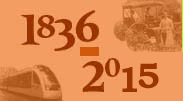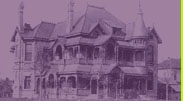YEARS OF DIVERSIFICATION (1960-1965)
After some uncertainty during 1960, the new year of 1961 opened on a strong note of economic optimism that continued despite disturbing developments on the international scene. President Kennedy proposed an Alliance for Progress to raise living standards in Latin America, but the Castro regime soon made it necessary for the United States to end diplomatic relations with Cuba. A few months later an ill-advised and inadequately-supported anti-Castro invasion of Cuba at the Bay of Pigs was crushed. The Communists sealed off East Berlin with a wall. The Soviet Union startled the world, and challenged science and education in the United States, when Cosmonaut Yuri Gargarin became the first man to orbit the earth. A few months later Astronaut Alan B. Shepard, Jr., making a sub orbital trip, became the first American in space. The Soviet challenge prompted quick expansion of the research and development program of our own federal government. Budget provisions for the federal governmentís entire research and development program climbed from $1,400,000,000 in 1953 to $6,100,000,000 in 1960 and to $17,000,000,000 in 1965. The nationís total research and development expenditures, public and private, climbed from $10,500,000,000 in 1960 to $22,000,000,000 in 1965.
Records for the 1960 decennial census showed a population of 179,323,175 for the United States, including Alaska and Hawaii, and a total of 9,579,677 for Texas, up 24.2 percent since 1950. The population of Harris County was 1,243,158, up 54.1 percent in ten years; and for Houston, the growth in the decade had been 57.4 percent, up from 596,163 in 1950 to 938,219 in 1960. During this period, the rate of Houstonís increase was approximately seven times the 8.2 percent average for the nationís larger cities.
Employment passed the half-million mark, and housing starts slacked off slightly as a trend toward high-rise apartments became apparent. A major office building program was getting under way, with the Americana Building, the First City National Bank Building and the World Trade Center being completed during 1961, with construction under way on seven other office buildings. P. H. Robinson, president of the Chamber of Commerce, said:
"Many American cities today suffer severe heart trouble. Old-age blight, attacking the heart of the downtown areas, rapidly spreads its infection outward. But current downtown construction in the heart of Houston probably totals more than a quarter of a billion dollars in multi-story projects recently completed, under way or announced. Including suburban and Medical Center-area construction, the totals would probably rise to more than $400,000,000. Present building programs will probably add five million square feet of floor space to rental properties in downtown Houston."
Listing the objectives of the Chamber of Commerce for 1961, President Robinson gave major emphasis to industrial development, with primary stress on consumer-products manufacturing, including both durable and non-durable goods. Efforts would be continued, he said, on major airlines cases still pending before the Civil Aeronautics Board and for the earliest possible development of the new Houston Intercontinental Airport. Increased emphasis would be put on tourist development and on conventions, which had already become a major industry for Houston. Efforts would be launched to get a new delineation for the Houston Standard Metropolitan Statistical Area, and new emphasis would be given to world trade and to expansion of Houston as a headquarters city.
A major change had taken place in the home-building industry in Houston. Before World War II, most homes were built by individuals who bought lots, wherever available and often sandwiched into long-established neighborhoods, to build homes differing widely in price, design and types of construction. After World War II, however, developers found new economies in filling entire subdivisions with homes, generally uniform in size, cost, floor footage, construction and design. This helped protect investment values. A buyer could be assured that no cheaper, smaller or inferior houses would be built nearby to depreciate his investment. Loan requirements of the Federal Housing Administration and the Veterans Administration also contributed toward this uniformity of values, which, however, was not permitted to result in built-in monotony. This was a contributing factor to Houstonís having the lowest family cost of living of any of the 20 largest cities, according to a U. S. Department of Labor survey.
In a background report on the proposed Humble Industrial District, later called Bayport, I said to the Chamber of Commerce Executive Committee on January 17, 1961: "In the early 1950ís, three basic steps seemed to be indicated for Houston: (1) assurance of a very large supply of fresh water in being; (2) increased diversification of industry with special emphasis on consumer-product types of manufacturing; and (3) opening up of a major new industrial area with water transportation available. The staff of the Chamber of Commerce several years ago started trying to interest the Humble Oil & Refining Company in the industrial possibilities of its 30,000 acres, known as the West Ranch property. The tract would need to he planned as a fully integrated district, with light-and heavy-manufacturing sites, with warehousing and wholesale-distributing areas, and with some sections dedicated to residential and commercial uses. A major interest such as Humble would be required to handle such an ambitious undertaking. The full development of this project could well mean the ultimate creation of 100,000 new jobs for the Houston area."
Not long afterwards, an Humble executive in an appearance before the Executive Committee pointed out that the project involved the general community interest. He said the West Ranch lands had been described as "the largest undeveloped area of its kind in North America capable of industrial development". The Board of Directors of Humble was about ready to announce the development program for the area when a series of extravagant annexation measures by adjacent municipalities left the property inside of three separate in-corporations. Because of this, the development that had been planned was threatened with being delayed for three or four years.
A series of events was creating a situation that would influence this development. Speaking in Houston in March, 1961, Colonel John P. Stapp, who had flown faster than any other man at the time, told an audience at the University of Houston that man is physically capable of space travel. Until that time, Houston had given little thought to the frontier of space. A short time later, Russia orbited a man around the earth. Early in June, while on a trip to Washington, I heard rumors of some type of new installation for the nationís space effort, and made calls at the office of Vice President Johnson and upon Congressmen Albert Thomas and Bob Casey. While the project was still in the planning stage, I was assured that Houston would receive consideration as a location for the project. I was advised that Houston should make every effort to convince any site-selection team visiting the area that it could fully and completely meet the criteria that would be under investigation.
The inspection team conducted its investigation a few weeks later, receiving full cooperation from the City of Houston, the Rice University, and the Chamber of Commerce. George R. Brown and Morgan J. Davis were especially effective in working out site arrangements with Congressman Thomas. On Tuesday morning, September 19th, announcement was made from Washington that the space laboratory, as it was first designated, would be built on property given to Rice University by the Humble Oil and Refining Company in the Clear Lake area, and that the installation would cost about $60,000,000. Within the hour, I had talked to Colonel John "Shorty" Powers, public affairs officer of the NASA Space Task Group at Langley Field, Virginia. We agreed to air-express Houston literature that afternoon for a Houston information office at Langley Field for the benefit of those who might be transferred to Houston. We arranged with local newspapers to send several copies of each edition to this information office, and wired NASA Administrator James Webb, offering the facilities and services of the Chamber of Commerce in connection with the move from Langley Field to Houston.
The next day, we sent two members of our staff to Langley Field with movies and slide presentations to meet with the personnel of the task force. It was estimated that 1,600 would be employed in Houston the first year, and that employment would reach 3,500 by the end of the third year of operations. On October 3rd, a group of NASA representatives, headed by Robert R. Gilruth, visited Houston for off-the-record conferences. With him and Walter Williams were Colonel Powers and six of the seven Mercury astronauts. Shepard and Grissom had already made sub-orbital flights, and Glenn was getting ready for his orbital flight. These first visitors were followed by Martin Byrnes, NASA representative, who began making arrangements for office space, personnel recruitment, housing and construction. Houston was thus launched into the space program.






